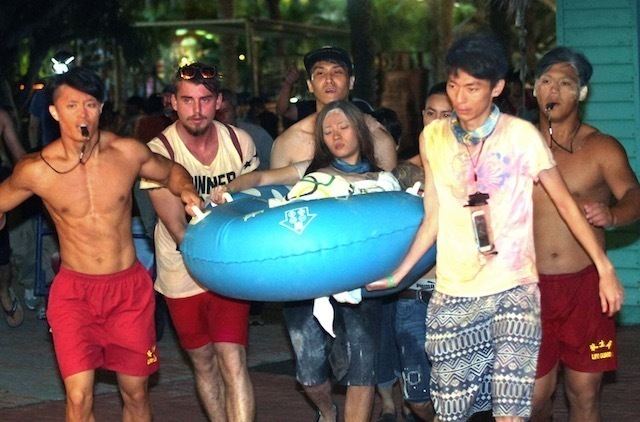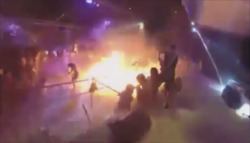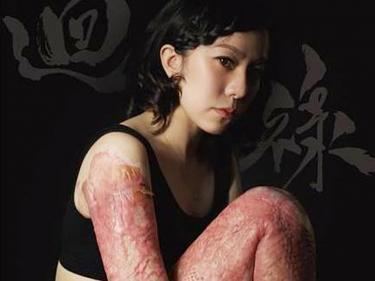Time 20:30 (UTC+8) Non-fatal injuries 497 Location Bali District, Taiwan Injuries 497 | Type Dust explosion Date 27 June 2015 Total number of deaths 15 Venue Formosa Fun Coast | |
 | ||
Locations New Taipei City, Taiwan, Bali District Similar 2014 Kaohsiung gas explo, 2014 Kunshan explosion, 1996 Pat Sin Leng Wildfire, 1999 Jiji earthquake, TransAsia Airways Flight 235 | ||
On 27 June 2015, flammable starch-based powder exploded at the Formosa Fun Coast, a recreational water park in Bali, New Taipei, Taiwan, injuring 508 people, with 199 in critical condition. As of 29 November 2015, fifteen fatalities were attributed to the explosion. The dust explosion, which occurred on a music stage during a "Color Play Asia" party (Chinese: 彩色派對; pinyin: cǎisè pàiduì), has been called the "worst incident of mass injury [ever] in New Taipei". The powder was identified, by some sources, as colored corn starch.
Contents

Background

The "Color Play Asia" party was inspired by the colored powder used in the Hindu religious festival "Holi", also called "festival of colors", which is celebrated in India, Nepal, and other countries with large Hindu populations. In August 2013, the first Taiwanese color party took place in Sizihwan, Kaohsiung City. It was organized by the same event company that organized "Color Play Asia".

That same year, a National Tsing Hua University expert warned that the colored powder used during the Color Play Asia parties might cause a dust explosion if the material was combustible.
Event

On 27 June 2015, the "Color Play Asia" party was held at the Formosa Fun Coast water park. Party-goers were singing and dancing on the stage, which holds up to 1,000. Other party-goers danced in a drained pool nearby.
The concert organizers deployed colored corn starch powder in the festivities. The method of powder application at the concert created "an extremely dense dust cloud over the stage and its immediate vicinity", people near the stage were standing "almost ankle-deep" in colored corn starch powder, and the powder was repeatedly suspended into the air using air blowers as well as compressed gas canisters.
At about 8:30 pm, a large deflagration occurred when a cloud of colored powder ignited after being discharged from the stage onto a crowd of 1,000 people during a concert. Some of the crowd breathed in the powder, causing respiratory problems. As recorded in an amateur video by an audience member, a massive fireball suddenly engulfed the stage. The powder caught fire along the ground, resulting in burns mainly to victims' limbs and torsos. According to the authorities, the fire was quickly extinguished. Some victims were carried out on swim rings. The rescue included help from army vehicles and soldiers, along with medical services.
Injuries and fatalities
The injured were treated in over 50 hospitals across Taiwan. As of 29 November 2015, 15 of the 497 injured had died, 44 victims remained hospitalized, and 11 are being treated at intensive care wards, while fifty-seven others were discharged from hospitals after treatment. Most of the injured were tertiary students in their twenties and late teens who had just started their summer vacation. An earlier estimate of 519 injured was due to double-counting of patients that were transferred between hospitals.
Many victims were lightly clad because of hot weather (36.6 °C (97.9 °F)) and the water park venue, and suffered burns over large portions of their bodies. Some victims suffered burns to 80-90% of their skin.
Four foreigners injured in the event were flown home via International SOS flights for follow-up medical treatment on 29 June: two to Hong Kong (Queen Mary Hospital and Prince of Wales Hospital), one to Shanghai (Ruijin Hospital) and one to Singapore (Singapore General Hospital).
Two suicides were linked to the event: a father of a burn victim committed suicide, while another suicidal man donated his skin to the victims.
Response
New Taipei City's mayor Eric Chu ordered an immediate shutdown of the water park pending an investigation. The man responsible for the event was detained by police for investigation.
On 28 June, Taiwanese Premier Mao Chi-kuo banned the use of colored powders at private events in Taiwan until the investigation is over and the powder can be considered safe.
The event's organizer Lu Chung-chi (Chinese: 呂忠吉; Hanyu Pinyin: Lǚ Zhōngjí; Tongyong Pinyin: Lyǔ Jhongjí, also known as Simon Lu) and hardware engineer were questioned and then given bail on the condition that they not leave the country. Lu Chung-chi apologized for the explosion on 28 June.
On 28 June a spokesman for China's Taiwan Affairs Office, Ma Xiaoguang, expressed sympathy for the victims and hoped they all received timely and appropriate treatment.
On 30 June Taiwan's Organ Registry and Sharing Center called for urgent donations of cadaver skin, since there were just 115 rolls left in Taiwan's cadaver skin stocks. According to Chairman Lee Po-chang (李伯璋; Lǐ Bózhāng), cadaver skin is more effective in blocking burn wounds from contamination sources and promoting skin regeneration than hog skin or synthetic skin.
According to officials, the Ministry of Health and Welfare collaborated with the New Taipei City Public Health Department and made an announcement that all medical expenses of the burn patients from 27 June to 30 September will be covered by the National Health Insurance Administration and the National Health Insurance Program.
On 2 July, a spokesman for China's Taiwan Affairs Office said it was ready to provide medical assistance to help treat the hundreds of people injured in the explosion. On 3 July, Taiwanese Minister of Health and Welfare Chiang Been-huang said he was grateful for China's offer to provide medical assistance, including donations of cadaver skin to Taiwan, but it should be first confirmed that the skin was not from executed prisoners.
Cadaver skin from the United States and Netherlands was scheduled to arrive in Taiwan.
Investigation
Investigators raised the question of whether the powder was ignited by a cigarette or spark; the supplier of the flammable, starch-based powder said "if it's in dense quantities and if it's hot, it can catch fire". Organizers had purchased three tons of the powder, and wrote on their Facebook page that it consisted of cornstarch and food coloring. The powder was sprayed from the stage onto concert-goers "at high velocity". The vice president of Tai Won Food Industrial Co, which makes the powder, says that there are warnings on the packages not to use them in closed spaces or under high temperatures. The New Taipei City news department head stated: "It's still not clear what happened, but there were a number of people smoking and the weather was warm."
According to the Fire Department, "Our initial understanding is this explosion and fire ... was caused by the powder spray. It could have been due to the heat of the lights on the stage".
WuFeng University fire science department instructor and Taichung Harbor Fire Department deputy captain Lu Shou-chien (盧守謙; Lú Shǒuqiān) commented in a letter to the Chinese-language United Daily News that the event organizers had set up necessary conditions for a disaster, and had not used water sprays which would have reduced the risk of ignition. Smoking was permitted at the event, and approximately 40 cigarette butts were found afterwards.
In October 2015, the committee set up by the New Taipei City government to oversee monetary donations related to the explosion announced plans to distribute the collected funds. Survivors were to receive between NT$65,000 and NT$6.5 million, depending on the severity of injuries sustained in the dust explosion. The families of the twelve people who had died were compensated NT$8.25 million.
On 16 October 2015, Shilin District prosecutors charged the event organizer, Lu Chung-chi, with negligence during the disaster; owners of the park were not indicted. Lu was found guilty of the charges in April 2016. In June 2016, the Supreme Court authorized the seizure of NT$507 million in assets from the park's senior administration. The National Health Insurance Administration also sought compensation worth NT$436 million from event organizers in court, claiming that the total medical cost incurred by the NHIA totaled NT$765 million.
Aftermath
After the accident, the government has adopted several emergency-related measures, such as the easing of the requirements for National Health Insurance coverage for burn victims, importing large amount of artificial and cadaver skin.
